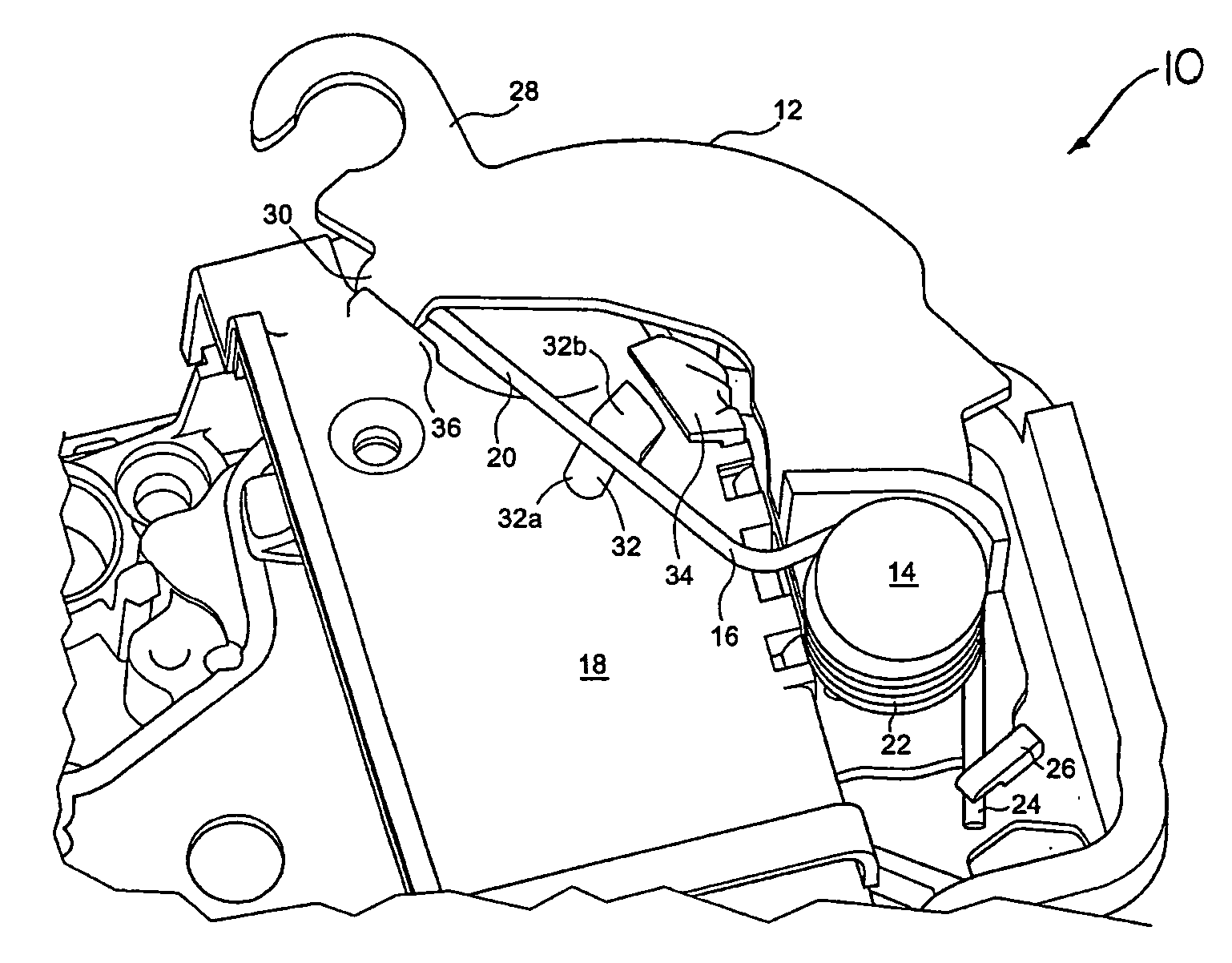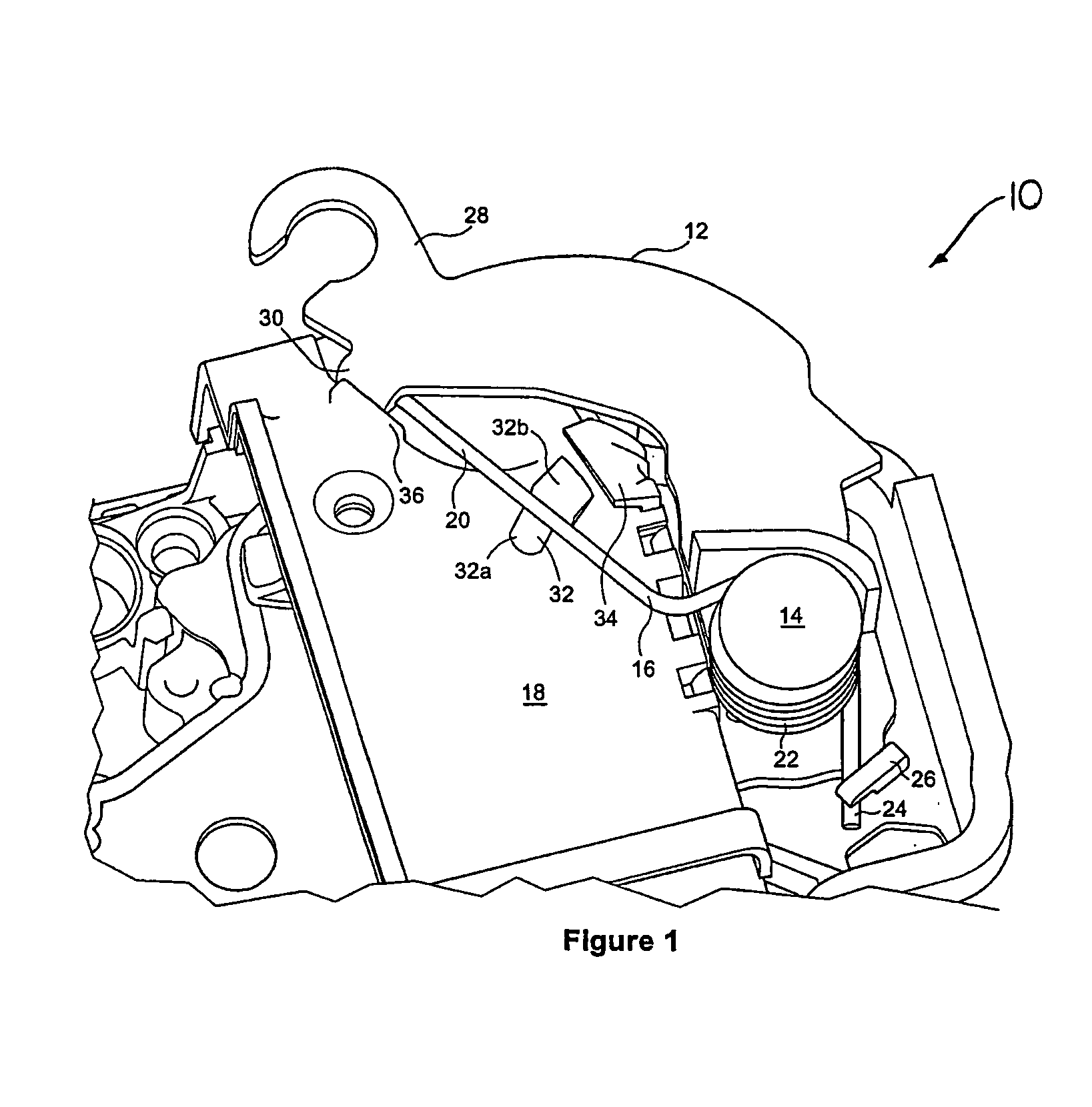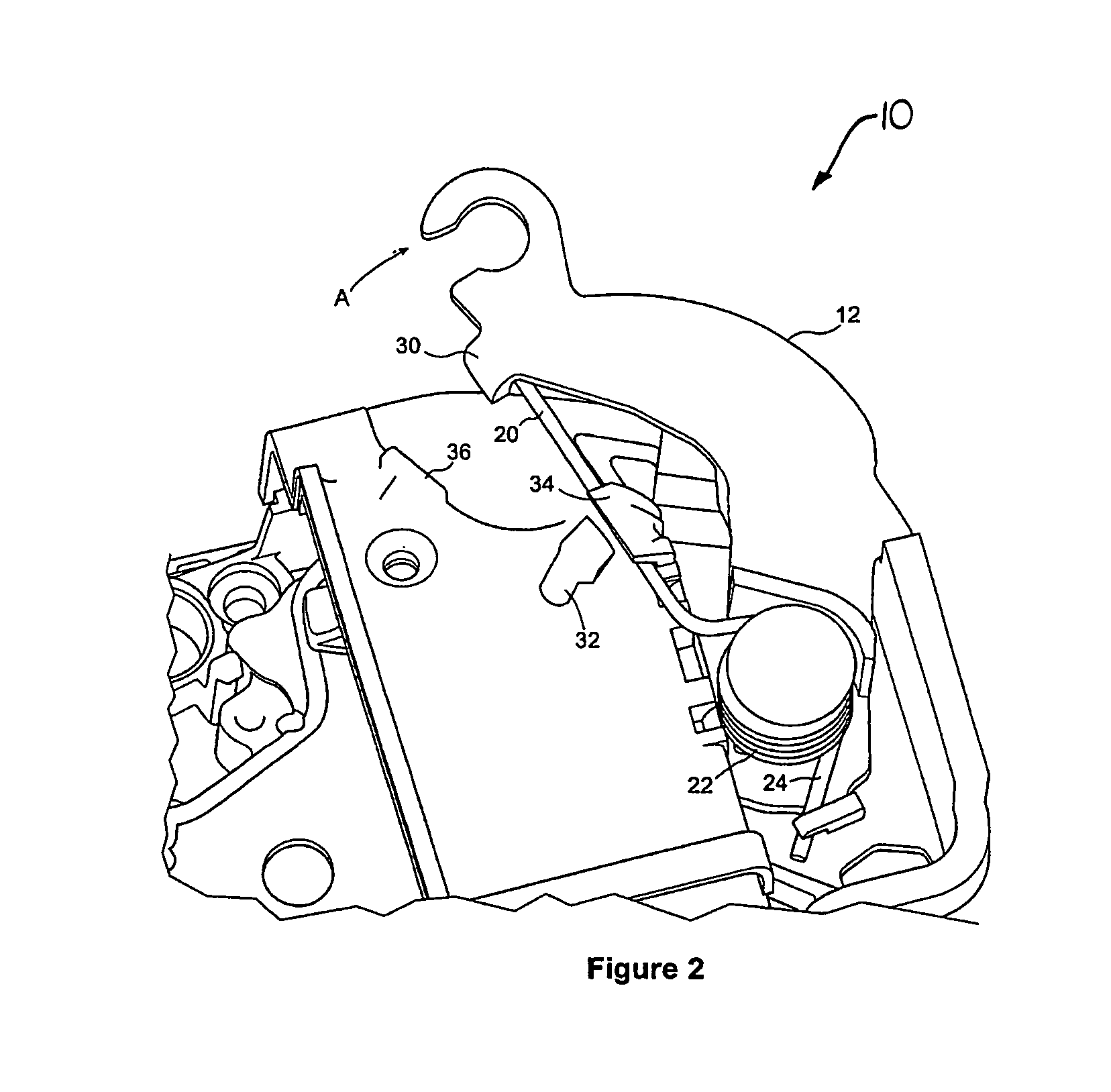Latch with shipping condition
a technology of latches and shipping conditions, applied in the field of latches with shipping conditions, can solve the problems of inability to adjust the rigid rod and the lack of useful functions of the spring, and achieve the effect of reducing increasing the biasing force on the lever
- Summary
- Abstract
- Description
- Claims
- Application Information
AI Technical Summary
Benefits of technology
Problems solved by technology
Method used
Image
Examples
Embodiment Construction
[0014]FIG. 1 illustrates a latch 10 of the present invention. The latch 10 is of conventional construction and design. Typically, latch 10 can have four levers, an inside and outside locking lever and an inside and outside release lever. Although the invention could be applied to any of these levers, the invention is preferably applied to the outside release lever for an operative connection to an outside door handle.
[0015]The latch 10 has a lever 12 that is pivotally connected to the latch 10 at pin 14. A spring 16 extends between the lever 12 and the housing 18 of the latch 10. Spring 16 has an elongated tail portion 20 extending from a coil section 22 wound about the pin 14, terminating in an opposite end 24. End 24 engages a tab 26 of lever 12. The tail portion 20 of the spring 16 engages a connecting end 28 of the lever 12 at an abutment or tab 30.
[0016]Housing 18 has a detent 32, preferably formed from two wedge shaped parts 32a, 32b molded in the face of the housing, and a st...
PUM
 Login to View More
Login to View More Abstract
Description
Claims
Application Information
 Login to View More
Login to View More - R&D
- Intellectual Property
- Life Sciences
- Materials
- Tech Scout
- Unparalleled Data Quality
- Higher Quality Content
- 60% Fewer Hallucinations
Browse by: Latest US Patents, China's latest patents, Technical Efficacy Thesaurus, Application Domain, Technology Topic, Popular Technical Reports.
© 2025 PatSnap. All rights reserved.Legal|Privacy policy|Modern Slavery Act Transparency Statement|Sitemap|About US| Contact US: help@patsnap.com



